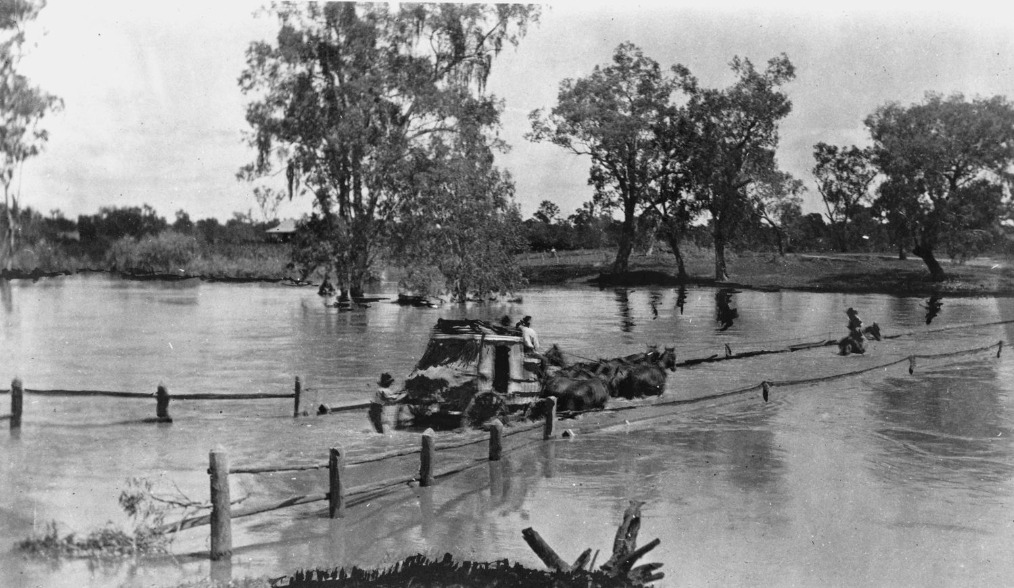Cobb & Co
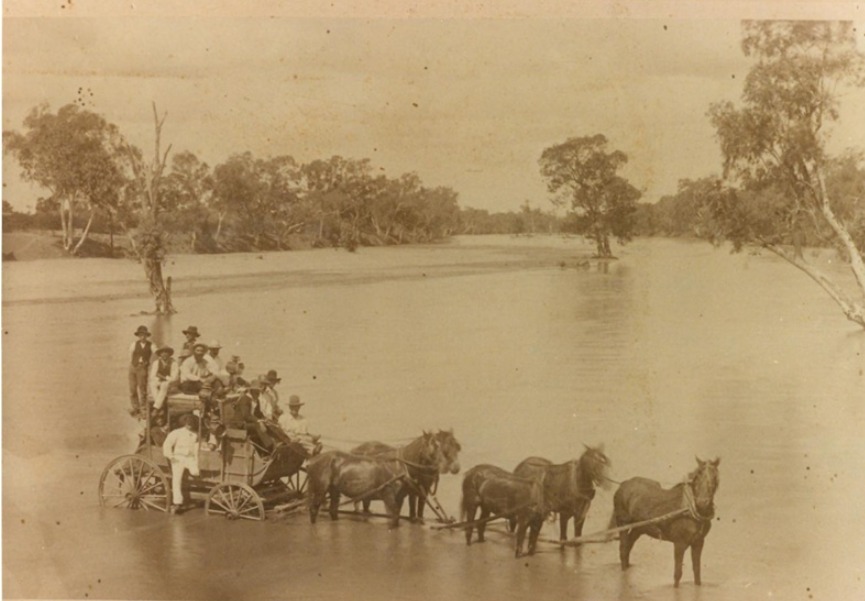
Waler Data Base @ Facebook. Image: A Cobb & Co. coach, fully laden with passengers crossing the Flinders River at Gillespie Crossing (at the eastern end of Brodie Street, Hughenden), ca.1890. Flinders Shire Council Historical Photos.
Cobb & Co was probably Australia’s most famous coaching line.
We are fortunate to have been sent recollections and private photos from those days by Steven Wickham: “My great grandfather Walter A. Wood drove Cobb and Co coaches near Moree NSW in the late 19th and early 20th century.” Such a privilege to share them!
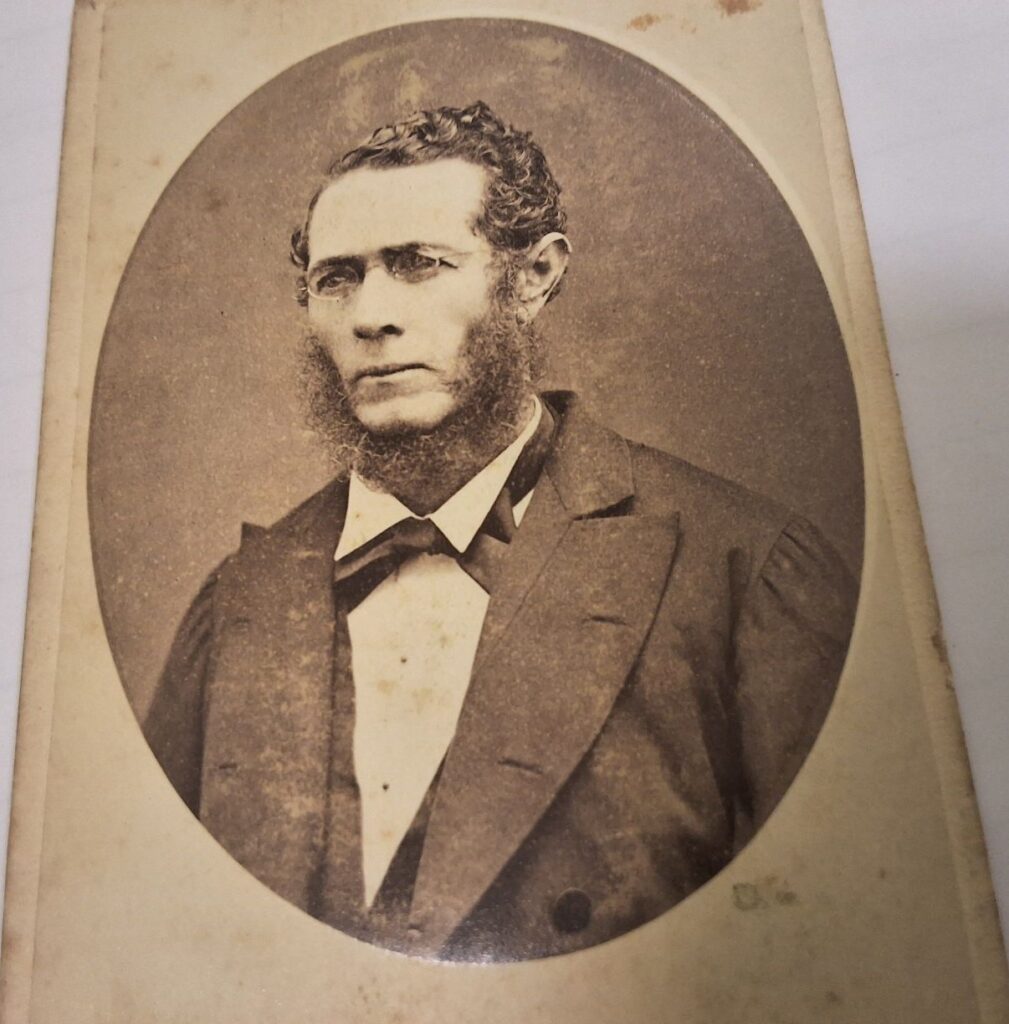
Walter A. Wood
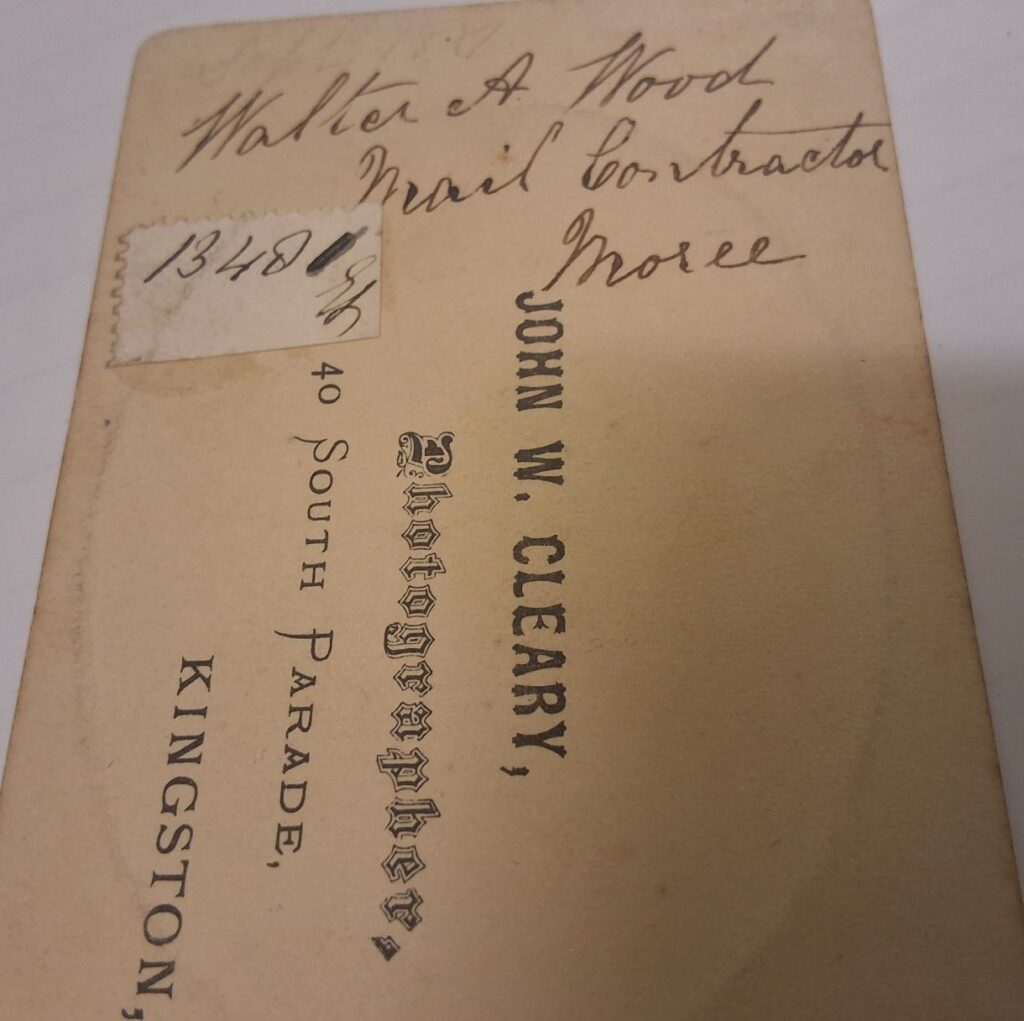
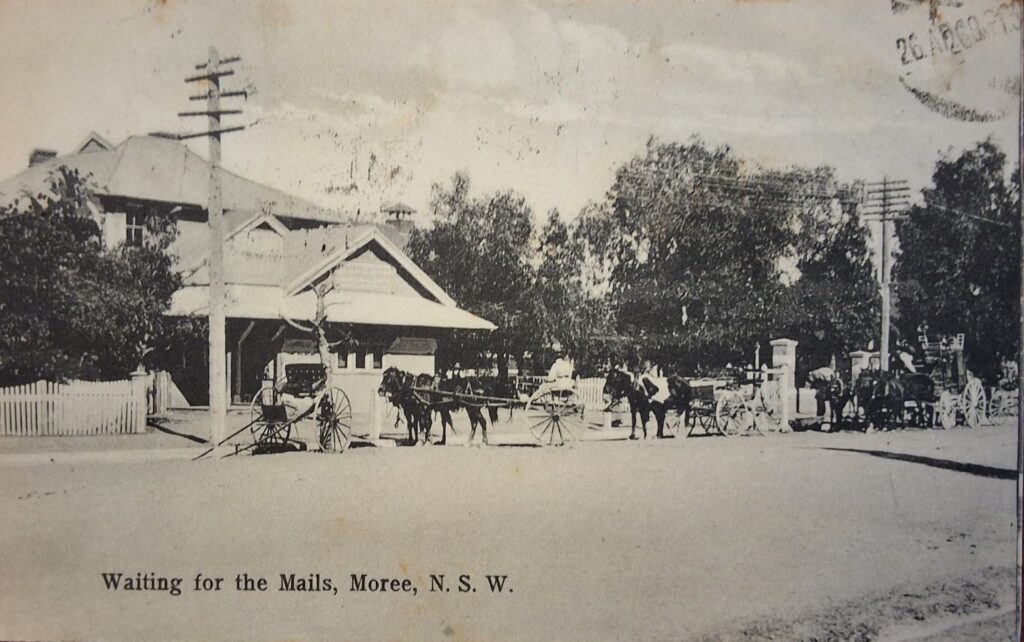
Mail came to Moree from Sydney and was variously distributed to Gunnedah, Narrabri, Boggabilla, Barraba, Gurley, Goondiwindi etc. Terrain varied, some was very steep, some flooded at times. There were several fatal accidents to coach drivers. Luckily Mr Wood managed extremely well. Moree area was very horsey, the annual show had heaps of ponies, hacks, harness horses and draughts, all top class.
Thanks to Richard Lodge for his recollection too: “My Grandfather had the coach run between Coonabarabran, Gunnedah, Boggabri and Baan Baa, around the same time. They were living at Rocky Glen then moved to Gunnedah when he got another mail contract. It was worth 156 pounds a year. His name was William Woolage.”
And the last word from David Hounslow: “And my Uncle made Coach and Wagon Wheels that were as essential as Horses and Drivers.” Absolutely!
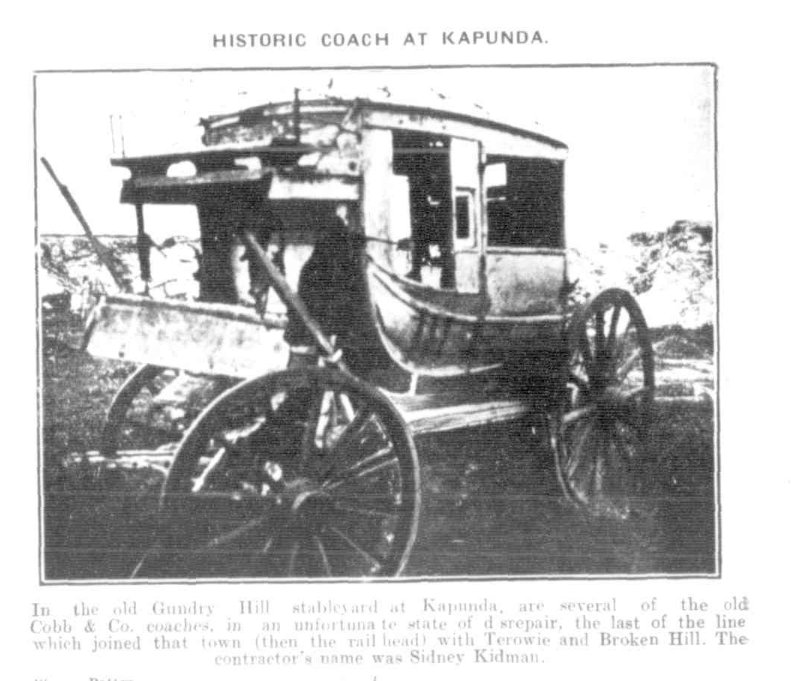
Cobb & Co ran in South Australia briefly – in 1866 they bought William Rounsevell’s coach and omnibus business there, re-selling it in 1870 to John Hill & Co. Of interest, Rounsevell started out with one horse for his first coach (vehicle anyway), named Chesnut Bob. The horse was soon famous, everyone loved him, a familiar sight. As William got more horses, coaches and omnibuses, Chesnut Bob kept working, always popular. Then William gave him a good retirement at Noarlunga, on pasture. Chesnut Bob however got out of his paddock every day, swam across the Onkaparinga and made his way to the coaching stables, to tuck into a hearty breakfast of warm bran mash!
Cobb & Co ran in Western Australia, Victoria, NSW and Queensland. They harnessed up 6,000 horses a day by 1870 in the eastern states alone, and paying 100,000 pounds in wages. James Nicholas was the man behind Cobb & Co in W.A, in partnership with Sidney Kidman.
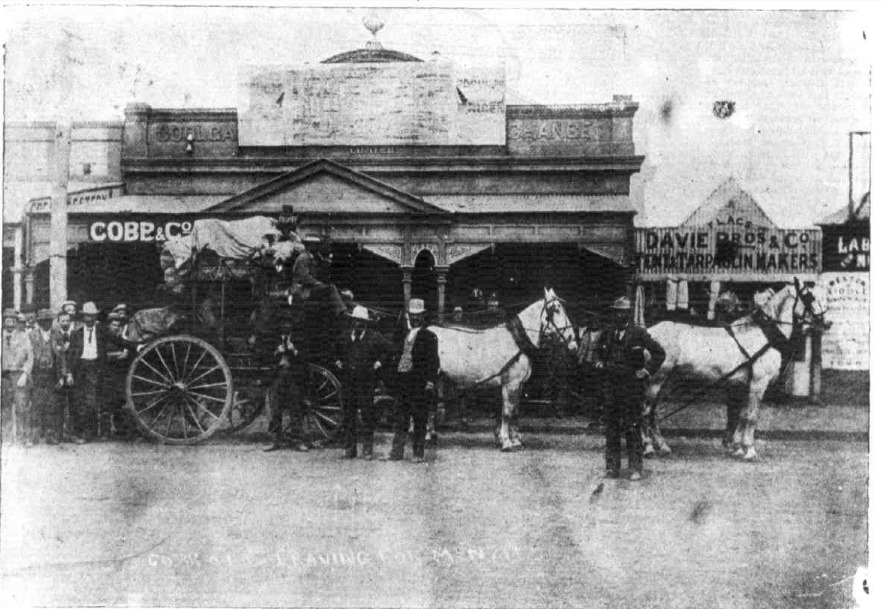
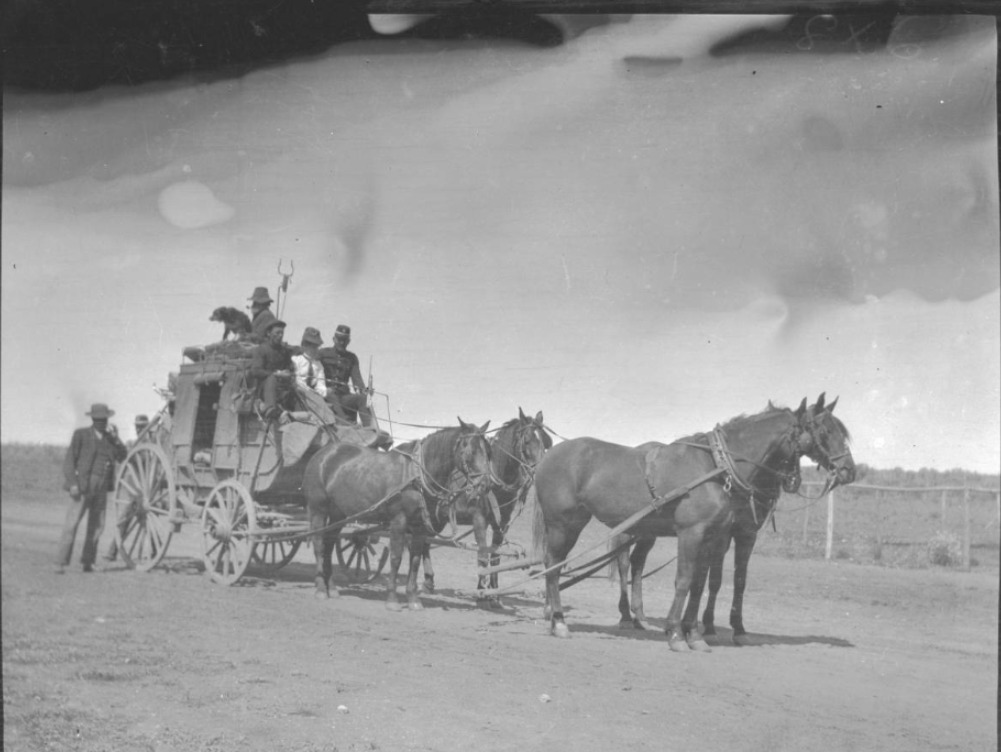
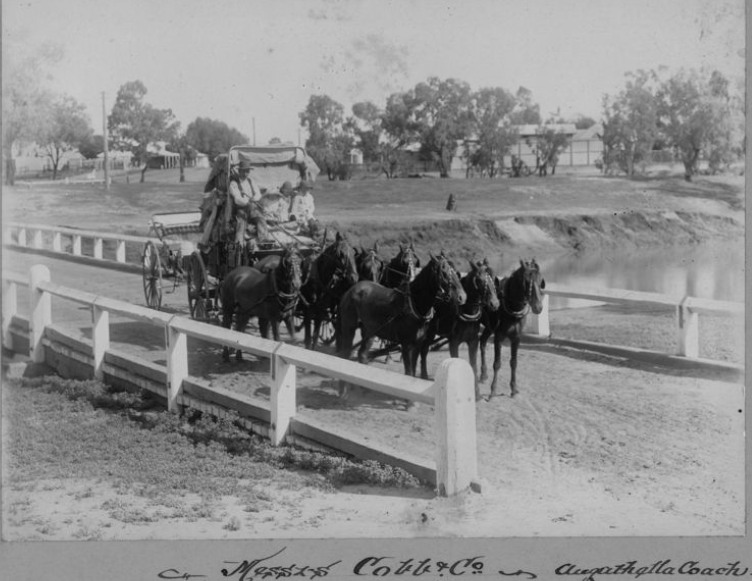
Images: Cobb & Co.’s booking office, Bayley Street, Coolgardie. Western Australian Goldfields Courier, 20th November, 1895, Cobb & Co. coach, Coolgardie, 1890s. State Library W.A.; Messrs Cobb & Co., Augathella coach, 1902-1904. State Library Qld
Many other coaching firms also worked in these states.
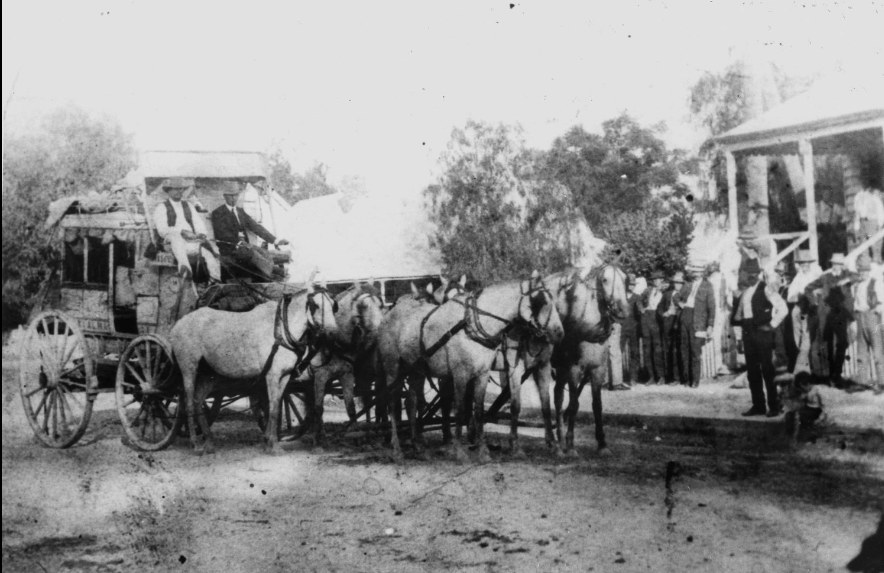
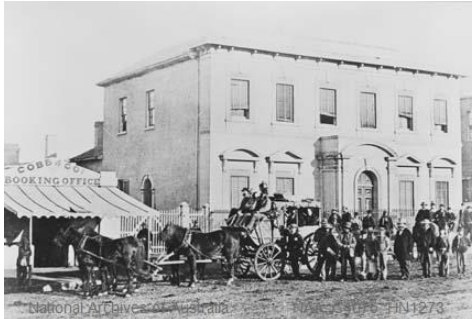
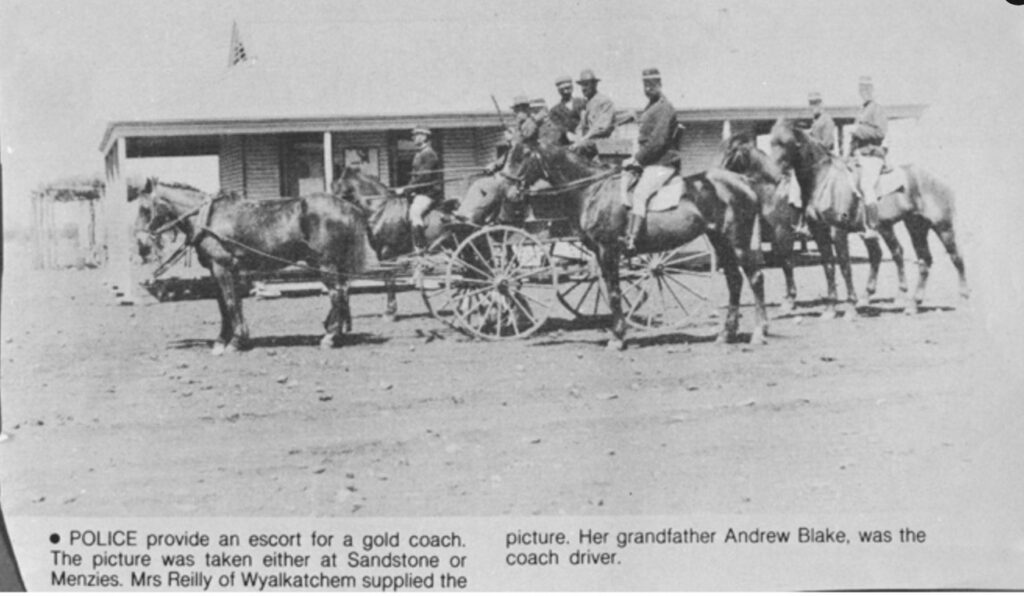
Images: Cobb & Co. coach arriving in St George, Queensland in 1910. State Library Qld; First Cobb and Co coach and booking office at Bathurst, 1862, National Archives Australia. A lot of the early runs were from gold fields, bringing out gold as well as passengers. By the late 1860’s there had been about 40 bushranger robberies of their gold carrying coaches. The gold rush at Bathurst made good business for Cobb & Co., it became one of their biggest bases; Mail coach leaving with gold, and police escort. C. 1908. State Library W.A.
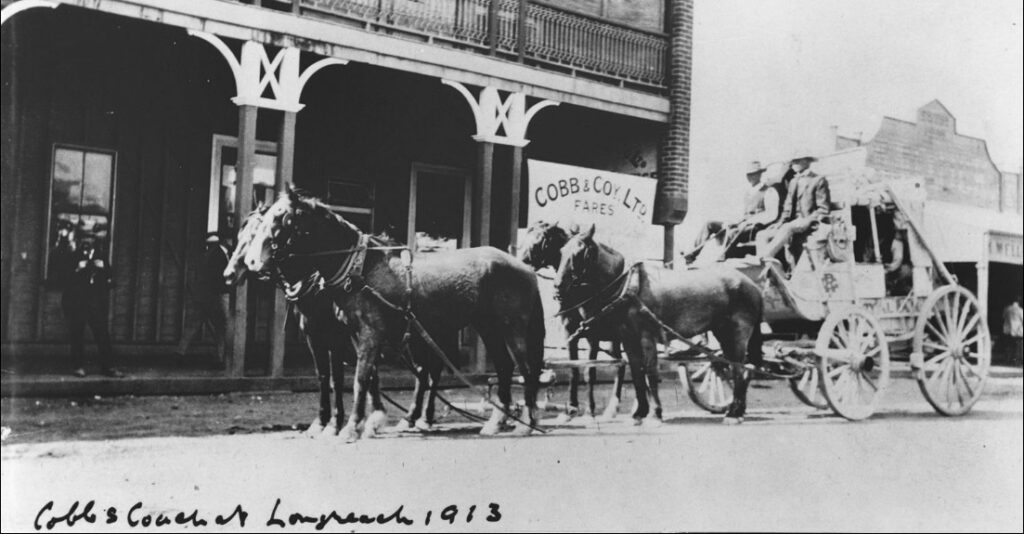
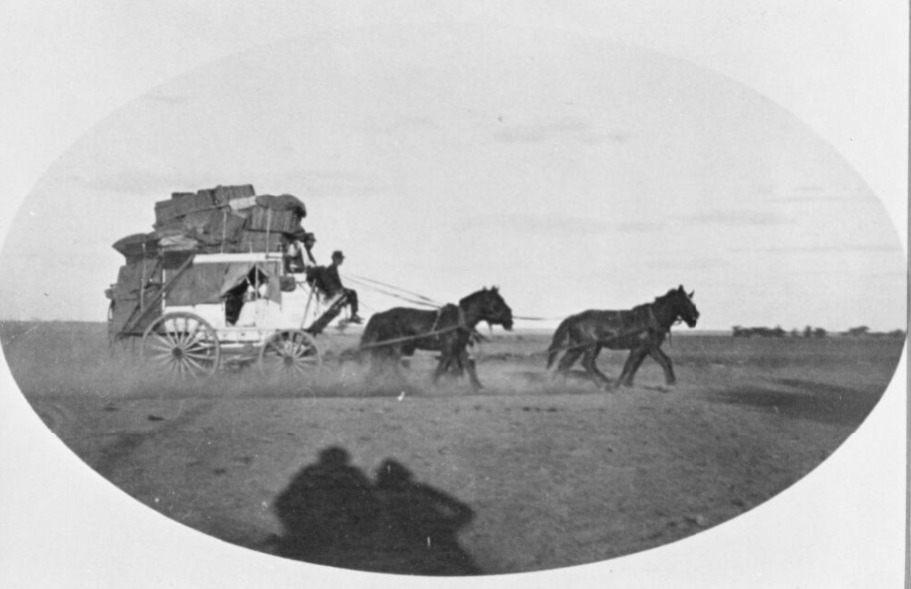
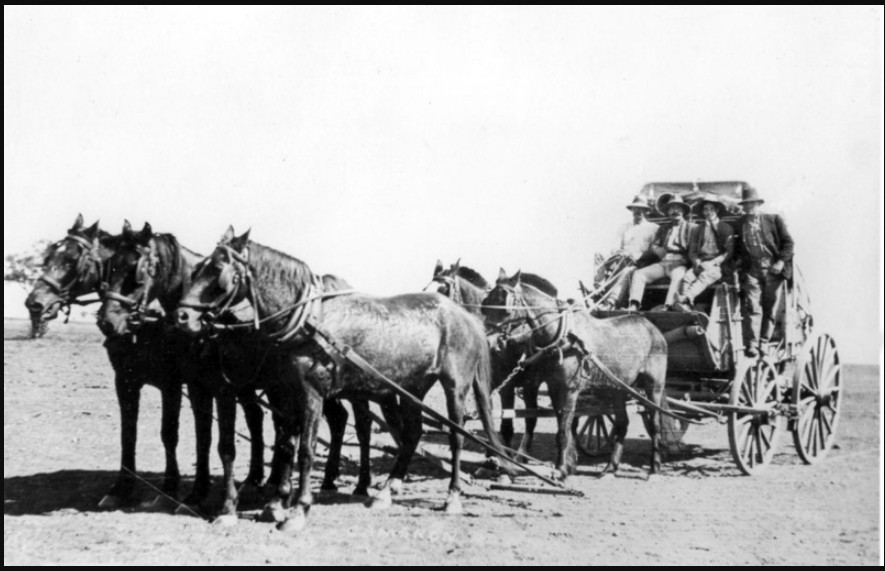
Images: Cobb & Co. coach ready to leave, Longreach, Queensland, 1913. State Library Qld; Cobb and Co. coach near Longreach, Queensland, ca. 1916. National Library Australia (the cane baskets are mail baskets); … team of horses pulling a Cobb & Co coach with four unidentified men on the coach. The photograph was taken at Cameron Downs Station (near Hughenden, Queensland) in 1912. Cameron Downs was one of the staging places for Cobb & Co, where the horse teams were left and exchanged for fresh ones, on the Hughenden – Muttaburra route. Flinders Shire Historical Photograph Project, State Library Qld.

Image: A Cobb & Co. coach at Eugowra, many years ago. The Land, 17th January 1938.
Good strong horses. It was at Eugowra Gap that Ben Hall and 7 comrades stuck up the coach. It was a four horse coach. There were 3 police as guards due to a lot of gold being carried. Two were shot but survived.
The horses took fright at the shooting and the coach was overturned. The driver, John Fagan, had been stuck up before and always kept his cool. John started working for Cobb & Co., driving Blue Mountains to Penrith and Parramatta – then bought out their line of coaches that went to Carcoar, Blayney, Cowra, Forbes, Glenfell and other centres. A popular and reliable driver, his voice familiar to all along the line. As coaches fell out of use he bought a hotel at Carcoar then went into grazing, very successful.
Image: James Rutherford, National Advocate (Bathurst), 11 August 1910
Just came across a story of Jim Rutherford – who really set Cobb & Co on its feet – painting ten Concord coaches bright gold, advertising them as “Follow the gold” – and took them with two feed wagons, 20 drivers, 20 grooms, some cooks, tents, provisions, water and a hundred and three horses – setting out from Bendigo, then a gold rush town – they travelled to Echuca, Deniliquin, Narrandera and Cootamundra.
This really opened up NSW and Qld for the company, Rutherford buying out other coaching firms along the way and leaving a coach or two here and there along the way as he set up other runs, becoming the manager for Queensland.
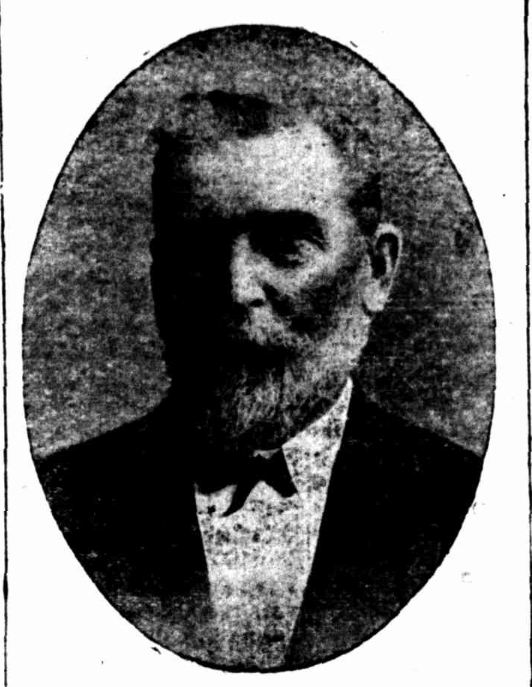
From New York state USA, Rutherford came here in 1852 for a gold rush, he was 25 years old. He soon found it more profitable dealing in horses. Freeman Cobb, John Peck and friends arrived much the same time, bringing with them the famous American Concord coaches – slung on leather straps called thorough-braces rather than on steel springs like the English style coaches we used at the time. Soon they set up a company, Cobb & Co., the coaches proved popular and comfortable, and Australian coach builders adapted to building our own style. Cobb himself did well and within two years returned to the USA, where sadly he lost his fortune.
Cobb & Co was struggling along with mixed fortunes when Rutherford came along. It had changed hands four times. He built the company up in no time and made it highly profitable, and before long, with five partners who’d also worked at improving the company, bought it. As the partners sold out or passed away, Jim was left as the sole owner of Cobb & Co. in the 1890’s.
Rutherford made a fortune, branching into ironworks too, and became the owner of several big stations in NSW and Qld. He was always very well thought of. He passed away in 1911 in Mackay Queensland, aged 83, he’d been active and healthy to the last. Had married an Australian and they had 11 children. He made Cobb & Co. a household word here, to the extent many call a coach a Cobb & Co even if in fact another company owned it!

Image: National Archives of Australia… ‘Cobb and Co coach in Yuleba, Queensland, taken in 1909 or 1910, fully laden with passengers and mail. It shows Arthur Senyard, manager of the Cobb and Co depot at Yuleba, at the left of the photograph, and Sergeant Joyce, the Yuleba Police Sergeant, at the right of the photograph. The coach driver, Alf Jensen, is shown holding the reins.
…coach was heavily loaded with mail bags and cane mail baskets, both on top and in the ‘hind boot’ – Cobb and Co was a mail contractor for the Post – Master General’s Department …Yuleba, a tiny township on the Warrego Highway 419 kilometres west of Brisbane and 60 kilometres east of Roma, and an important centre for some years prior to 1910 when it was a railway terminus for the area to the west – Yuleba was involved in the last Cobb and Co coach run on 16 August 1924, when the coach travelled from Surat to Yuleba.
Depicts a white, 14-passenger ‘thoroughbrace’ coach, probably built at Cobb and Co’s Charleville coach factory and advertised as ‘the most scientifically built long distance horse vehicles known’ – the term ‘thoroughbrace’ refers to the suspension of the coach body on leather straps, ten of which were used on this coach; the development of this suspension, ideally suited to Australian conditions, was a major factor in Cobb and Co’s success because it offered a somewhat more comfortable ride than its competitors.
Suggests that the coach appears to be carrying its full load of 14 passengers …
The full complement of 14 passengers would have been carried as three rows of three people inside, three persons on the back of the coach, and two on the “box seat” beside the driver. To add, this type of coach suspension was invented in America in case the caption infers otherwise. Of interest the company’s Queensland coaches were white, their NSW ones red and yellow.
While Cobb & Co coaches often had five horses harnessed, there were a lot of variations. The last Cobb & Co. coach run was the Surat to Yuleba run in Queensland, 50 miles (80 k’s).
The last Cobb & Co coach there was an 8 passenger coach – the 14 passenger coach (shown above) finished up before it. The 14 passenger coach was bought by the government and sent to the Brisbane Museum, then Canberra’s National Museum where it was somewhat restored, finally to Toowoomba.
